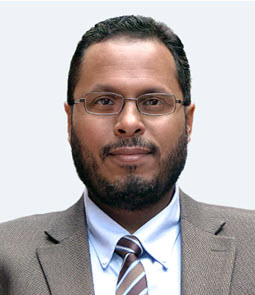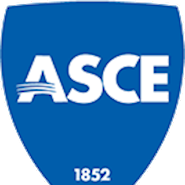
Wael M. Hassan, Ph.D., P.E., S.E., F.SEI, F.ASCE, an associate professor of structural and earthquake engineering at the University of Alaska Anchorage, has been named a fellow by the ASCE Board of Direction.
Hassan’s research interests are numerical simulation and large-scale testing of structural systems and components, seismic assessment and retrofit of existing construction, and performance-based seismic design (PBSD). His Ph.D. research was part of an NSF project that led the City of Los Angeles to issue a new ordinance to enforce retrofitting all its nonductile concrete buildings. Hassan’s research on seismic assessment has had broader national impacts: his assessment models were adopted by ACI, NIST, FEMA, and SEAOC seismic assessment standards and guidelines. He has authored/co-authored 50-plus peer-reviewed papers and supervised numerous graduate theses in earthquake engineering.
He has received several honors throughout his career. He was elected in 2021 as the first Alaska Fellow of the ASCE Structural Engineering Institute (SEI) and was the official SEAAK nominee for the 2021 Alaska Engineer of the Year Award. He has been an invited visiting professor in top schools in Spain and Colombia. Hassan has significant teaching experience in a wide variety of structural and earthquake engineering courses at University of Alaska, Santa Clara University, American University in Cairo, UC Berkeley, and UC Irvine.
Hassan’s industry experience has also been impactful. He established and led the PBSD of tall buildings’ practice at Skidmore, Owings & Merrill (SOM), San Francisco, the designers of some of the world's tallest buildings. He led and advised the PBSD of several tall buildings in the U.S. and internationally.
He has served on many U.S. and international code committees, including ACI-318: Structural Concrete Building Code; ASCE 7: Minimum Design Loads for Buildings; ASCE-41 and ACI-369: Seismic Evaluation and Retrofit; and others. Hassan is an active earthquake reconnaissance leader; he co-led the EERI field reconnaissance mission in Alaska after the M7.1 2018 Anchorage Earthquake – the largest earthquake near population in the U.S. in 50 years – and developed a seismic risk mitigation plan that was key in proposing seismic policy changes in Alaska.
Hassan received his doctoral degree in structural engineering and master’s degree in applied mathematics at University of California, Berkeley, where he was also a postdoctoral researcher. He obtained his bachelor of science and master of science degrees in civil and structural engineering at Cairo University. He is a licensed professional civil engineer and structural engineer in California.



